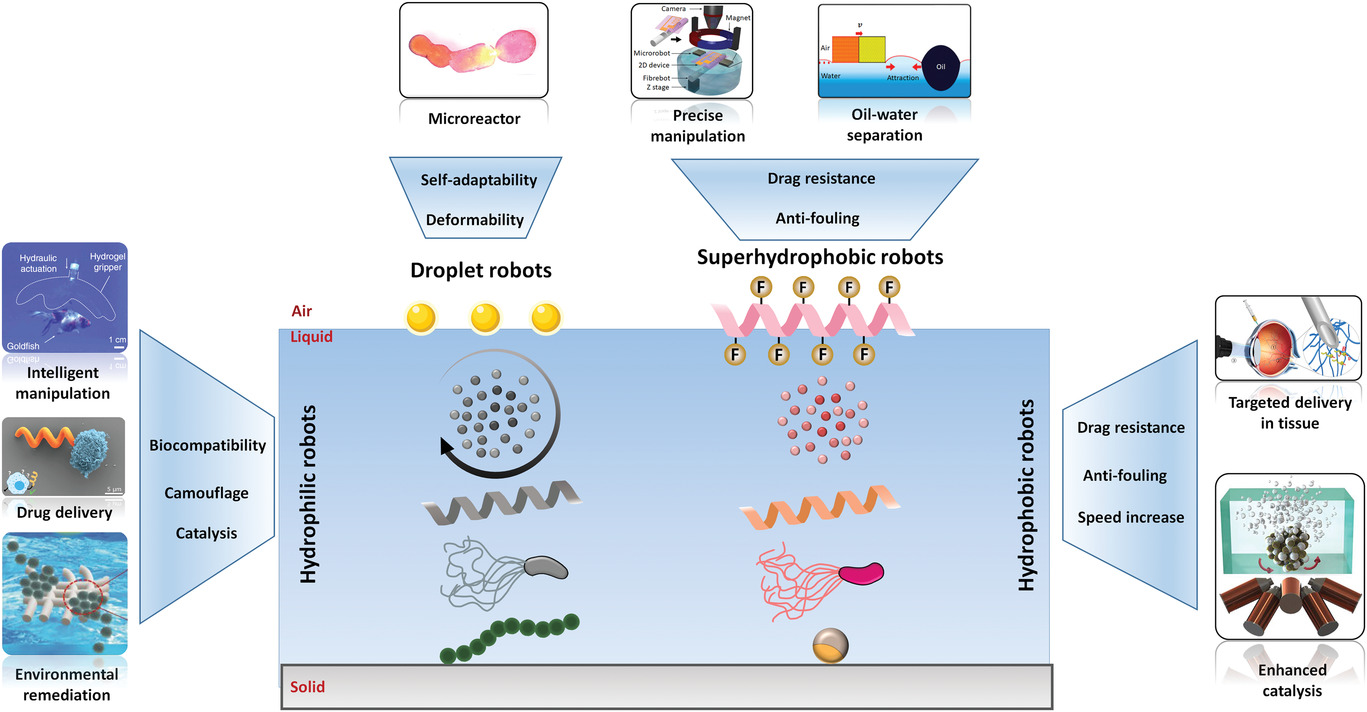Research
We enjoy finding things out. At some point, it is only you and noone else who knows new phenomena.
Research Topics

Nanorobots
Self-propelled autonomous nanomachines – topic of recent Nobel Prize 2016 – represent new paradigm in nanotechnologies. These autonomous nano-devices gather energy from their surroundings, navigate, are able to swarm and to selectively search for specific cells or chemical species. We work on fundamental research as well on environmental and biomedical applications of these nanomachines.

Electrochemistry of Nanomaterials
Electrochemistry is the driving force of modern technology – it represents the hearth of batteries in cars, of supercapacitors in airplanes, of large processes producing clean fuels such as hydrogen or of converting pollutants such as carbon dioxide to useful chemicals. We investigate basics of electrocatalysis of materials and we apply this knowledge in improving living conditions of humankind.

Nanomedicine
We still have only a very limited understanding of the interactions of nanomaterials with living organisms. We utilize 2D nanomaterials for drug delivery, we study their toxicity and metabolism. The aim of our research in this area is to develop highly targeted cancer therapy.

Flexible Wereable Electronics
Wearable flexible electronics, "wearables", is an extremely important area of future technological development. "Wearables" is not just a smartwatch, but a whole range of wearable devices, including biosensors, implants, biomedical equipment, electrochemical cells utilizing body fluids to power these devices, and super-capacitors. These devices have tremendous potential to improve quality of life and safety. We develop electrochemical wearable sensors and self-powered devices to create a new generation of wearables.

3D printing
3D printing has revolutionized the concept of object manufacturing, making an enormous impact on industry and economy. The technology has found applications in countless areas. It has rendered practical solutions to scientific problems by offering tailored-shaped devices with exquisite control in design and geometry and through the versatility of printable materials. We develop 3D printing for construction of catalytic systems for energy storage and energy generation devices as well for bioanalytical chemistry devices.
Equipment
International Partners

The center has four official international partners, such as Micromachines Centers (Joe Wang) at University of California, San Diego, USA; Hersham group at Northwestern University, USA; Fisher center at Cambridge University, UK and Materials Nanoarchitectonics Center (MANA) at National Institute for Materials Science, Japan (Prof. Ariga). We have frequent exchanges of scientists with these centers. Apart from these 'MOU official centers', we collaborate with dozens of other groups, from UK, USA, Singapore, Japan, China, Spain (Alcala, Barcelona), Germany, to Sout Africa.
Open positions:
PhD, MSc, BSc students (fully funded possitions)
We are constantly looking for highly talented students to work in our center.
Nanorobots Center supported Post-doc
We are constantly looking for highly talented, outstanding post-docs to work in our center.

Marie Curie Post-doc
We will be very happy to support your application for Marie Curie post-doc at our group. We are very successful, out of 2 people applying in 2017 2 of them were funded!

























